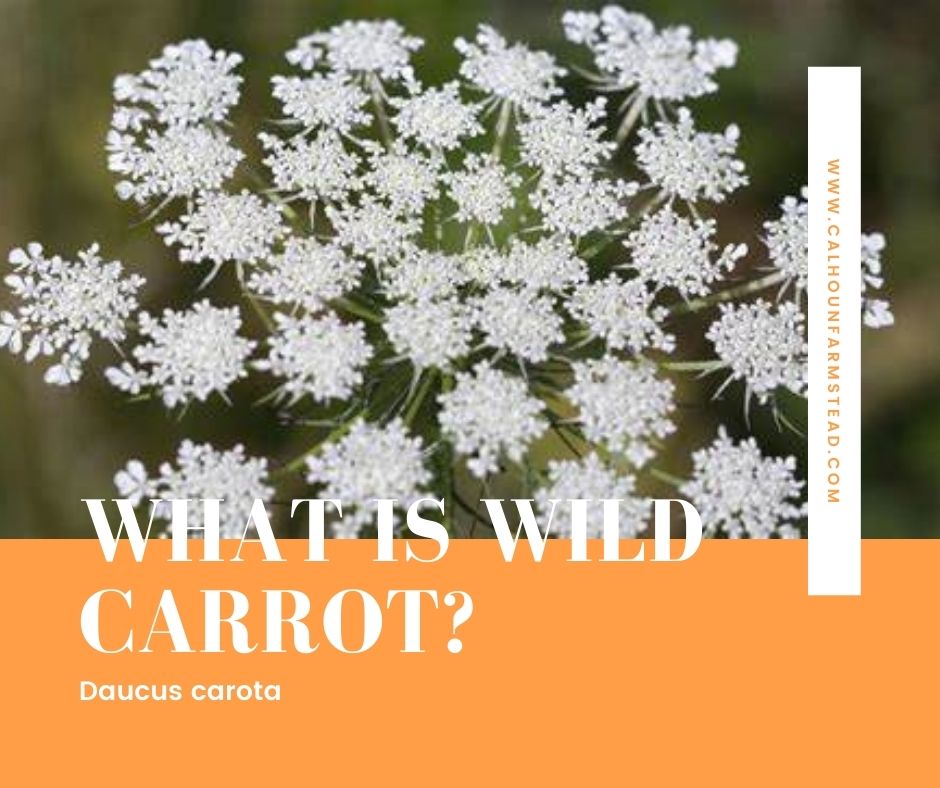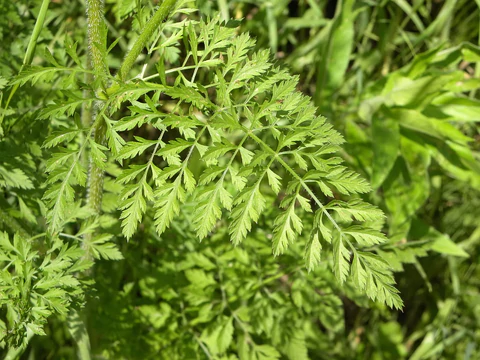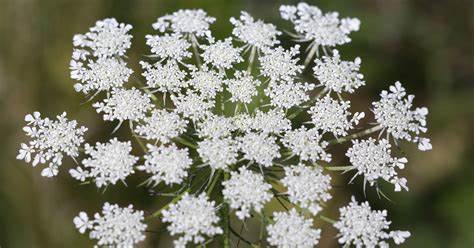
Wild Carrot, whose scientific name is Daucus Carota, is commonly known as Queen Anne’s Lace. A flowering plant that is a member of the carrot family, which includes parsley, parsnip, fennel and angelica.
Where does it grow?
The herb is native to temperate regions of Europe, southwest Asia and naturalized to North America and Australia. Around our farm it grows wild in my flower beds and fields. Cultivated carrots could also have escaped from gardens to become naturalized. Wild carrot now occurs at different levels of weediness in most eastern and southern Canadian provinces and all 48 contiguous states of the USA, with reports also from Alaska and Hawaii
Beware look-a-likes!
It is quite similar in appearance to the deadly poison hemlock. Wild carrot is distinguished by a mix of tri-pinnate leaves, fine hairs on its solid green stems and on its leaves, a root that smells like carrots, and occasionally a single dark red flower in the center of the umbel.
Why is it called “Queen Anne’s Lace”?
It is named for Queen Anne of England. It is so called because the flower resembles lace; the red flower in the center is thought to represent a blood droplet where Queen Anne pricked herself with a needle when she was making the lace.
Plant description
Wild Carrot is an herbaceous, biennial plant that can reach a height of 3 feet and a spread 1 foot. It prefers fine-particle soil and a high nutrient status, but endures a wide range of condition. The herb has small and spindle shaped root that is whitish, slender, hard, and resembles a white carrot. Stem is erect and branched, generally about 2 feet high, tough and furrowed. Leaves are bipinnate-pinnatifid in structure Both stems and leaves are covered with stout coarse hairs.
Leaves
Leaves are bipinnate-pinnatifid or pinnate-bipinnatifid in structure; oblong-linear or narrowly rhombic in shape, and sometimes sparsely ciliate along their margins. The upper surface of these leaf segments is light-medium green and glabrous, while the lower surface is light green and glabrous to sparsely hairy. Both stems and leaves are more or less clothed with stout coarse hairs.


Flower
The compound umbels of flowers are 2-5 inch across and flat-topped to slightly dome-shaped. Each compound umbel consists of 20-90 umbellets, and each umbellet has 15-60 flowers. Flowering normally takes place from Jun to August
What is it good for??
Do not take Wild Carrot if you are pregnant or hope to become pregnant in the near future. It may serve as an implantation preventer. The seeds are a beneficial antiseptic diuretic useful in the treatment of cystitis and prostatitis. Also, the seeds are used for the prevention and washing out of gravel and urinary stones. As a diuretic, it helps with dropsy and the elimination of uric acid from the body (thus, used for gout). The seeds, which are high in volatile oil, are soothing to the digestive system, useful for colic and flatulence The root is very high in Vitamin A and minerals. The juice is reputed to have anti-cancer activity. The root helps to expel worms and is an effective antacid for heartburn and gastritis. A poultice of the root is excellent for first aid, especially for itchy skin.


